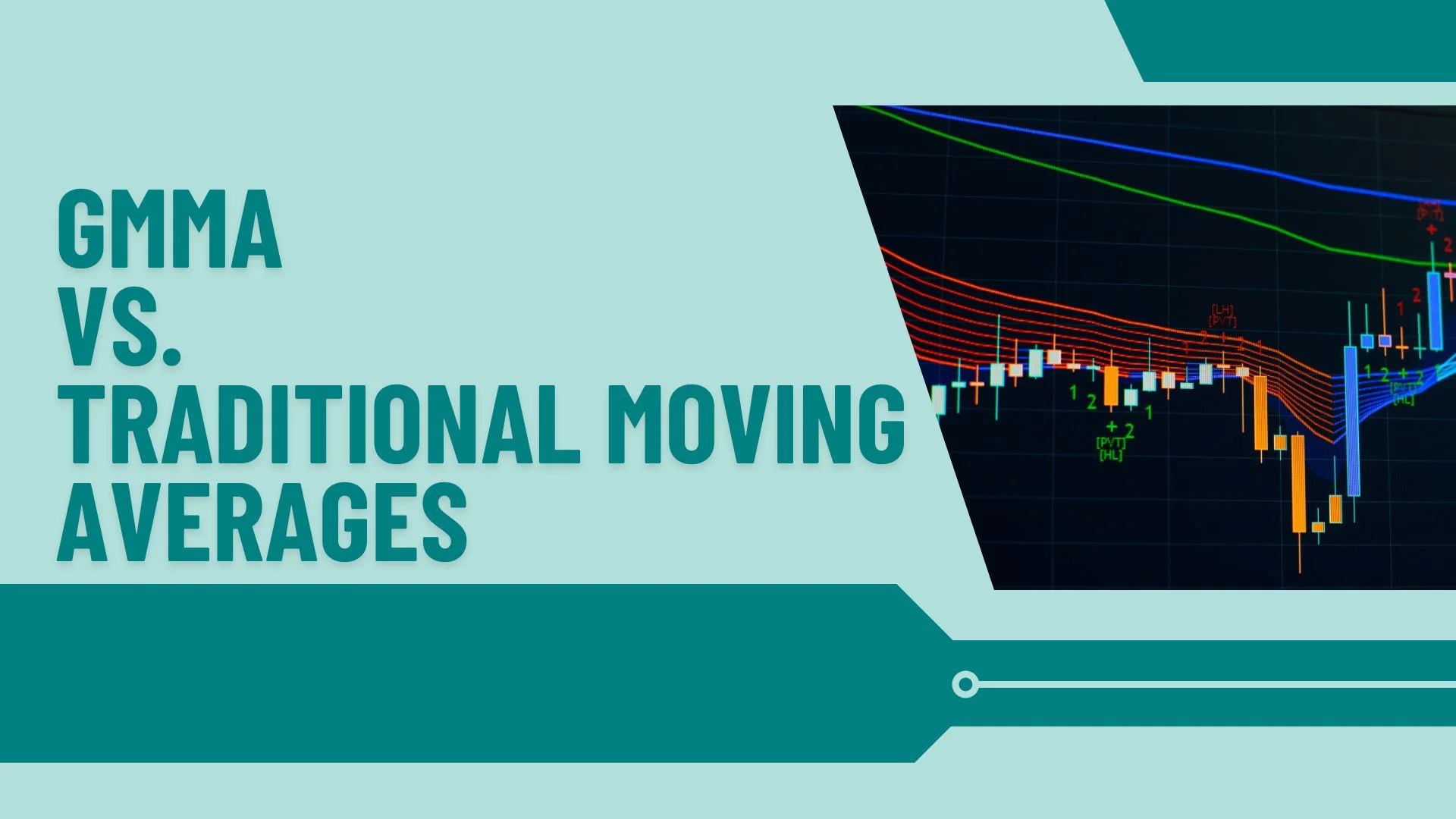Last updated on September 25th, 2024 at 09:09 am
As a trader, anticipating market trends and changes helps you win in the market. And every trader who has worked for a long time on trading platforms uses various tools to help them spot these trends. You might have tried traditional moving averages like Simple moving averages (SMA) or Exponential moving averages (EMA) to spot these trends, but with all the new tools, these tools aren’t up to the mark anymore. But don’t worry, we have a new and more advanced tool – GMMA.
The Guppy multiple moving average (GMMA) differentiates long-term and short-term traders and assesses the market movement based on the behaviour of these two groups. This article will explore what GMMA is and how useful it is when compared to traditional moving averages so you can decide whether to keep this tool in your toolkit.
What is GMMA?

The Guppy multiple moving average (GMMA) was invested by an Australian financial professional, Daryl Guppy. He invented the GMMA tool to help traders anticipate market trends by understanding the market’s behaviour.
Guppy divided the market into two categories based on its behaviour: long-term and short-term. The first group focuses on long-term trends, while the second focuses on short-term.
The short-term group is based on people who invest for a short time, like day traders, and this group reacts quickly to market fluctuations. The long-term group is based on people who invest for a long period; this group moves slower and provides insights about the direction the market is heading. You can make better trading decisions when you combine these two factors.
READ MORE GMMA Guide: Avoid These 7 Mistakes
The Traditional Moving Averages

A traditional moving average is also a technical tool traders use to filter out unnecessary price fluctuation noise and simplify the identification of trends. It is done by taking the average stock price over a certain period.
For instance, if you are calculating the average for the previous 30 days, Divide the closing prices of the 30 previous days by 30, and You will get the average price. The average allows traders to see how stock prices move over time. The average helps traders to understand how the stock prices are moving in the long-term game.
There are a few types of moving averages, but the most generally used types of traditional moving averages are the Simple moving average (SMA) and the Exponential Moving Average (EMA).
- Simple Moving Averages (SMA) is a trading tool that helps traders identify trends by calculating a stock’s average for a certain time. By calculating the average of the stock prices, you can clear out the daily fluctuations and see the bigger picture about whether the prices are moving up or down. If the prices are above the average, it suggests an upward trend; if the prices are below the average, it indicates a downward trend.
- Exponential Moving Average (EMA) considers the latest prices while calculating the averages. This means that when there are price fluctuations in the market, EMA will register and reflect it more quickly than SMA.
Traders use these moving averages to filter out unnecessary price fluctuation noise and simplify the identification of trends. If the current price is higher than the moving average, it indicates an upward trend. If it is below, it means a downward trend.
The Differences between GMMA and Traditional Moving Averages
What makes GMMA different from traditional moving averages, then?

Single Average vs Multiple Averages
Traditional moving averages give you insights about particular stocks using one or two averages. On the other hand, GMMA uses 12 groups! These 12 are further divided into two groups: 6 for short-term and 6 for long-term averages.
Depth Of Insight
Traditional moving averages provide an accurate picture of the market of a particular period. GMMA offer a more comprehensive and multilayer perspective. It helps you understand the direction the market is headed in and how strongly it is moving in that direction.
Adaptability
GMMA considers more factors when averaging, which allows it to adapt to market changes much better than traditional moving averages. This makes GMMA more suitable for short-term traders who trade in highly volatile markets.
READ MORE ABOUT How to Use the GMMA Indicator for Trend Identification and Confirmation
Final Statement
Traditional moving averages and the Guppy multiple moving averages are excellent tools for traders to understand and anticipate market trends. When we put both against each other, GMMA provides a more thorough and detailed analysis. Traditional moving averages help us spot trends, but so does GMMA, which goes a step further and displays how strong the trend is. So, if you are considering switching to GMMA, go for it; there is nothing to lose. Instead, you will get some extra factors while trading.
Please feel free to leave questions and tips in the comments. Happy trading!


3 thoughts on “GMMA vs. Traditional Moving Averages”